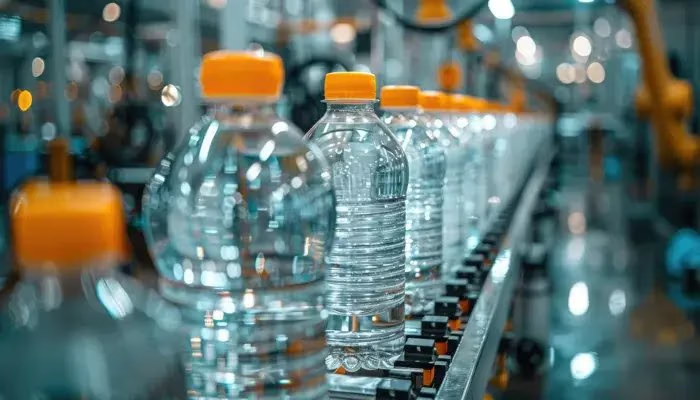Summary: In the dynamic manufacturing industry, maintaining efficiency is crucial for staying competitive and satisfying complex customer demands. Line balancing, a fundamental principle in lean manufacturing, involves the even distribution and timing of tasks across assembly lines to remove bottlenecks and avoid surplus capacity. This results in higher productivity, shorter lead times, and significant cost reductions. By balancing operator and machine time, manufacturers can achieve a smooth and efficient production flow, meeting customer demand and maintaining high production rates. This blog post will delve into the meaning of line balancing, its importance, and strategies for successful implementation in your production facility.
Introduction
To cope with cost pressures in manufacturing, it’s essential to implement measures that ensure efficient utilization and operation of production lines. Therefore, a primary objective should be to eliminate issues such as bottlenecks, underutilization, and waiting times in production. Bottlenecks typically occur at the workstation where the processing steps (workload) take the longest. These steps generate what is known as “Work-In-Progress (WIP) inventory,” encompassing all goods currently in the processing phase. Conversely, at workstations with shorter processing times, idle times occur as these stations have to wait for further tasks from the preceding workstations with longer process times. Idle time refers to periods when a unit is unproductive or unused (but operational). This is where the method comes into play. Line Balancing aims to optimize the value chain and eliminate waste.
Line Balancing in Manufacturing Defined
Line balancing is a vital strategy in lean manufacturing that optimizes production lines by ensuring an even distribution of workloads among operators and machines. This approach reduces bottlenecks, minimizes idle time, and enhances overall production efficiency. By implementing line balancing techniques, manufacturers can achieve a smooth production flow, meet customer demands effectively, and maintain high production rates. This method ensures that each workstation has an equal amount of work, preventing any operator or machine from being overburdened or idle, which is essential for meeting customer demand and maintaining high production rates.
The Importance of Line Balancing
Visualize a manufacturing assembly line as a finely-tuned symphony, where each station contributes harmoniously to the seamless flow of products. Ideally, every workstation operates in perfect synchronization, ensuring a smooth transition of products from one station to the next. However, the reality on the factory floor often strays from this ideal. Without effective line balancing, assembly lines can become disjointed, leading to multiple issues:
Inefficiency
When some stations are overloaded with tasks while others remain idle, it causes delays and wastes valuable resources and time. This imbalance disrupts the overall efficiency of the production process.
Variability
Uneven distribution of work can lead to inconsistent product quality and fluctuating production lead times, ultimately resulting in customer dissatisfaction.
High Labor Costs
Overloaded workers at certain stations may face burnout, while underutilized employees at other stations may underperform. This imbalance unnecessarily increases labor costs, affecting the overall productivity and profitability of the operation.
Is your production flow as balanced as it should be?
Our manufacturing plant maintenance software helps optimize workloads and reduce bottlenecks.
Benefits of Production Line Balancing
The benefits of the concept are numerous. Firstly, it helps to minimize downtime and waiting waste by ensuring that machines work continuously and efficiently. This leads to improved production efficiency and a higher overall production rate. Additionally, it reduces excess capacity and idle time, resulting in a balanced production line that operates smoothly and effectively.
How to Achieve Line Balancing
To achieve line balancing, manufacturers must first analyze the production process and identify any bottlenecks or areas with excess capacity. This can be done using a precedence diagram, which shows the sequence in which tasks must be completed. By rearranging tasks and adjusting the production rate, manufacturers can ensure that each workstation has a balanced workload. Visual management and data collection are also essential tools for monitoring and maintaining a balanced production line. Centerlining can also play a role here, as it ensures that production processes remain within optimal operational parameters, reducing variability and improving consistency across the line.
Take Action to Improve Your Production Line
Implementing line balancing strategies can transform your production line into a model of efficiency and productivity. Start by analyzing your current processes and identifying areas for improvement. Use digital tools to gather data and make informed decisions about task allocation and production rates.
How Digital Tools Improve Line Balancing in Lean Manufacturing
Digital tools and manufacturing apps play a significant role in improving line balancing. These tools enable real-time data collection and analysis, allowing manufacturers to quickly identify and address any imbalances in the production line. By using digital tools, manufacturers can optimize the entire production process, ensuring that all tasks are completed efficiently and on time. This leads to improved line efficiency and a higher production output. Lean manufacturing practices, including line balancing, are essential for staying competitive in today’s fast-paced manufacturing environment. By continuously improving your processes and adopting new technologies, you can ensure that your production line remains efficient, productive, and capable of meeting customer demands.
FAQ I Line Balancing
What is Line Balancing?
The concept involves distributing work evenly across all workstations in a production line to achieve optimal efficiency and minimize idle time. It ensures that every station has a nearly equal amount of work to avoid bottlenecks and underutilization of resources.
What key terms are related to Line Balancing?
Some key terms related to line balancing include lean manufacturing, cycle time, takt time, workstation, operator, production rate, precedence diagram, and balancing the production flow.
How does line balancing enhance productivity and efficiency?
It improves productivity by ensuring a smooth workflow, reducing downtime, and preventing bottlenecks. Furthermore it helps in maximizing the use of labor and equipment, leading to a more efficient production process. By minimizing wait times and eliminating waste, it contributes to higher throughput and lower operational costs.
Why is balancing machine and operator time crucial?
Line balancing involves not only balancing tasks across workstations but also ensuring that the operator and machine time are synchronized to maximize production efficiency and minimize idle time.
How does line balancing align with lean manufacturing principles?
It aligns with lean manufacturing principles by emphasizing waste reduction, continuous improvement, and efficient resource utilization. This alignment leads to enhanced operational efficiency, lower production costs, and improved product quality. By ensuring that each workstation operates optimally, line balancing supports the overall goal of lean manufacturing to create more value with less waste.
How can new technologies improve Line Balancing?
Advanced technologies such as simulation and AI can model different scenarios and predict the outcomes of various line balancing strategies. They enable manufacturers to test and optimize line configurations virtually before implementing them on the shop floor. AI can also continuously monitor and adjust the line balance in real-time, responding dynamically to changes in production conditions.
What are critical factors when implementing line balancing?
It is crucial to consider factors such as task times, workstation capacities, worker skills, equipment reliability, and demand variability. Additionally, understanding the interdependencies between tasks and the flexibility of the production line to adapt to changes is essential for successful line balancing.
What are common challenges during the line balancing process?
Common challenges include variability in task times, equipment breakdowns, fluctuations in demand, and worker absenteeism. These can be mitigated by implementing flexible workstations, cross-training employees, maintaining robust equipment maintenance schedules, and using real-time data to adjust the balance dynamically.
How do you measure Line Balancing success?
The effectiveness can be measured through key performance indicators (KPIs) such as cycle time, throughput, work-in-progress (WIP) levels, equipment utilization rates, and production lead time. Analyzing these metrics helps identify areas for further improvement and ensures that the line balancing efforts are yielding the desired results.
What future trends and innovations are expected to influence line balancing strategies?
Future trends and innovations include the integration of Industry 4.0 technologies, such as the Internet of Things (IoT), big data analytics, and machine learning, , which are key drivers of smart factories. These technologies will enable more precise and adaptive line balancing strategies, allowing manufacturers to respond swiftly to changes in production demands and conditions. Additionally, the rise of collaborative robotics (cobots) will enhance the flexibility and efficiency of production lines.
How do One Piece Flow and Batch Production relate to line balancing?
Both One Piece Flow and Batch Production are methods that can impact line balancing. One Piece Flow focuses on moving individual units through each step without delay, helping to balance work across stations and reduce WIP (Work-in-Progress). Batch Production, on the other hand, processes multiple units at once, which can lead to inefficiencies or idle time between batches. The choice between these methods depends on factors like setup time, product variation, and production demands.
Image: Adobe Stock – Copyright: © WACHI – stock.adobe.com





